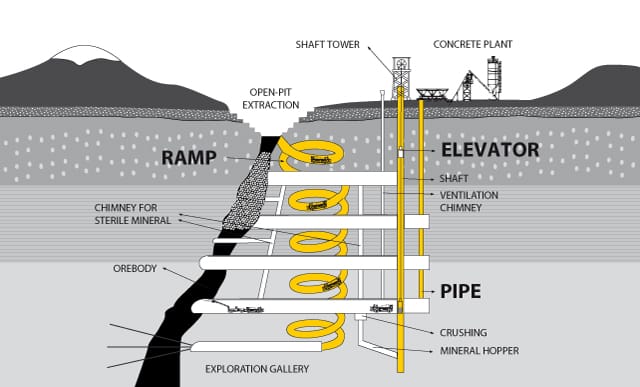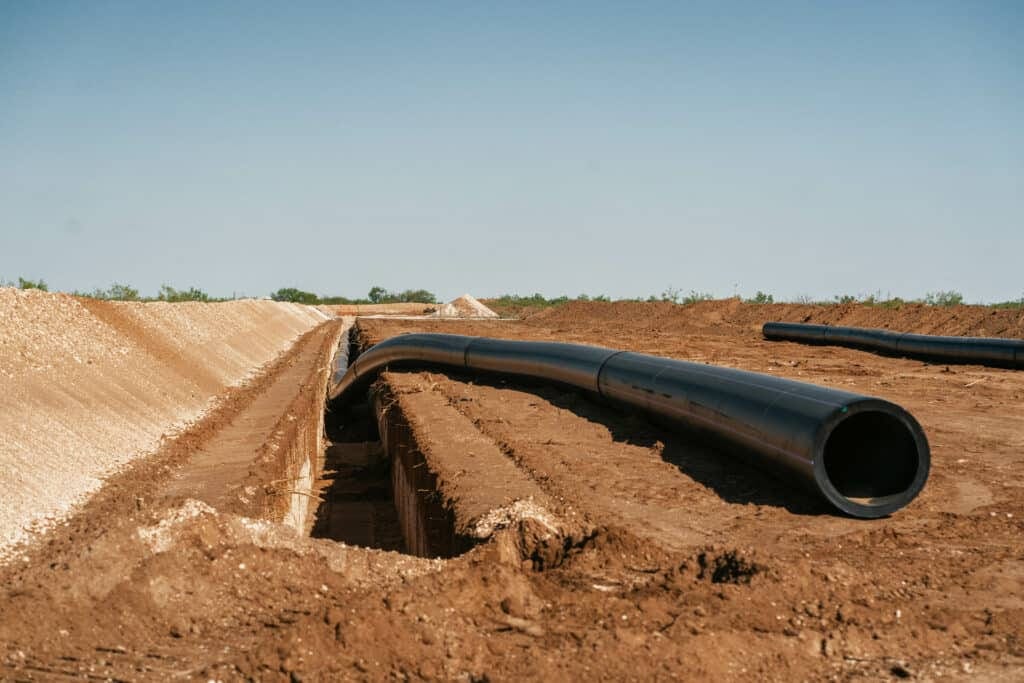Introduction
Underground mining is a critical method employed in the extraction of valuable minerals and resources that lie buried deep beneath the Earth’s surface. This technique stands distinct from its counterpart—surface mining—primarily due to its location and the unique challenges it poses. As global demand for minerals continues to rise, understanding underground mining becomes essential not only for industry stakeholders but also for environmentalists, policy-makers, and local communities. In this blog post, we will delve into the definition of underground mining, examine its advantages and disadvantages, outline the processes involved, and assess its environmental impacts. dcpipe pipeline expert

What is Underground Mining?
Underground mining refers to the extraction of minerals and resources from underground deposits. This method is typically used when mineral deposits are located too deep below the surface to be economically extracted through external means, such as open-pit mining. These resources can include coal, gold, silver, copper, and diamonds among others. The general techniques of underground mining include shaft mining, drift mining, room and pillar mining, and longwall mining, each suited to different geological scenarios and mineral types.
Advantages of Underground Mining
- Higher Resource Recovery: One of the most significant advantages of underground mining is its ability to extract resources that are not easily accessible via surface mining techniques. By penetrating deeper into the Earth’s crust, underground mining can recover more minerals, sometimes reaching deposits that were previously considered unminable.
- Reduced Surface Disturbance: Underground mining often leads to less disturbance of the surface environment compared to surface mining. This can result in less land degradation, lower noise levels, and reduced visual impacts on nearby communities and ecosystems.
- Lower Water Use: In many cases, underground mining may require less water than surface mining processes, which often involves large quantities for dust control, ore processing, and waste management.
- Efficiency in Certain Geographies: In regions where surface deposits are limited, or where the geological conditions are adverse for surface operations, underground mining can often be the most viable option. This helps companies maintain profitability and operations despite geographic limitations.
Disadvantages of Underground Mining
- High Initial Costs: One of the most significant drawbacks of underground mining is its high upfront investment. The costs associated with creating access points, ventilation systems, and safety infrastructure can be considerably higher than those required for surface mining.
- Safety Hazards: Underground mining introduces a host of safety challenges, including the risk of cave-ins, toxic gas exposure, and accidents related to machinery. Mining companies must invest continuously in training and equipment to ensure miner safety.
- Less Efficient for Some Deposits: While underground mining can access deeper resources, it may not be as efficient for shallower deposits that could be extracted more easily with surface techniques. This can lead to increased operational costs for managing multiple mining approaches.
- Limited Recovery of Lower Grade Ores: It may not always be economically feasible to mine lower-grade ores underground, which may limit the total resource base that a mining operation can exploit.

The Underground Mining Process
The underground mining process typically involves several stages, each critical to successful mineral recovery.
- Exploration and Feasibility Study: Before any mining begins, extensive geological surveys and explorations are conducted to assess the availability and viability of mineral deposits. This includes drilling, sampling, and environmental assessments.
- Mine Design and Planning: Once a viable deposit is confirmed, mine design and operational planning begin. This encompasses the design of shafts, tunnels, and other infrastructure, as well as the creation of plans for ore extraction and waste management.
- Development: This phase involves the construction of the mine’s infrastructure, including ventilation systems and transportation routes. This development can take years and requires significant resources.
- Extraction: Utilizing methods such as room and pillar or longwall mining, ore is extracted from the mine. The choice of method depends on the deposit’s characteristics and economic considerations.
- Post-Mining Operations: After the desired amount of ore has been extracted, mining companies engage in backfilling, rehabilitation of the mine site, and restoration of surrounding areas to mitigate environmental impacts.
Environmental Impact of Underground Mining
Understanding the environmental impact of underground mining is paramount, especially in an era increasingly concerned with sustainability and ecological preservation.
- Groundwater Contamination: One of the significant environmental concerns related to underground mining is the potential for groundwater contamination. Chemicals used in the mining process can leach into groundwater supplies, posing risks to nearby ecosystems and human communities.
- Subsidence: The extraction process can cause the ground above mining activities to sink or collapse, known as subsidence. This can disrupt local infrastructure, alter landscapes, and impact ecosystems.
- Habitat Disruption: While underground mining is less disruptive than surface mining, it can still lead to the loss of underground habitats, impacting species that rely on those environments.
- Energy Consumption and Carbon Footprint: The operational processes of underground mining often require significant energy use, contributing to the carbon footprint of the mining industry. As global efforts focus on reducing carbon emissions, mining operations must evaluate their energy sources and consumption methods.
Conclusion
Underground mining plays a vital role in our modern economy, providing resources necessary for numerous industries—but it is not without its challenges. As we navigate the complex interplay of resource demand, environmental sustainability, and safety, stakeholders in the underground mining sector must prioritize responsible practices to minimize negative impacts. By continuing to innovate within the field and investing in environmentally friendly technologies, the mining industry can work towards a balanced approach that supports global needs while protecting our planet for future generations. dcpipe pipeline expert

